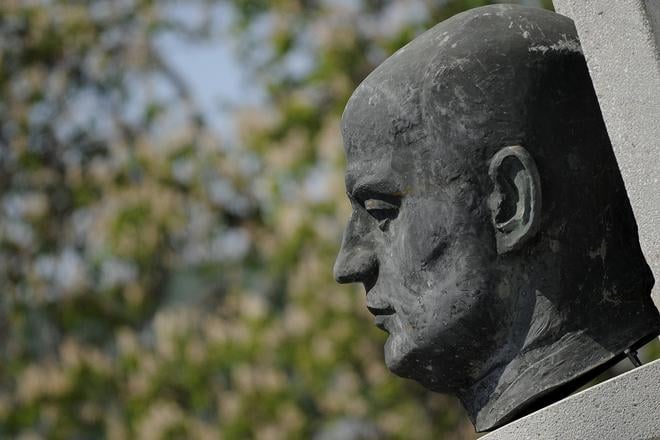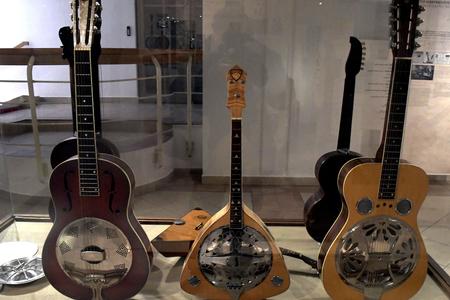You can read this exclusive content thanks to the FALATH & PARTNERS law firm, which assists American people with Slovak roots in obtaining Slovak citizenship and reconnecting them with the land of their ancestors.
Communication, data, money, connection of devices - the amount of technology that works wireless today is staggering. But it was only more than a century ago that the basics of the technology were laid.
Among the pioneers of wireless technology is Slovak priest, painter, inventor, and botanist Jozef Murgaš, who earned nicknames such as "radio's forgotten genius" and "priest-scientist" for his groundbreaking work.
From humble beginnings
Jozef Murgaš was born in 1864 to a family of poor farmers living in the village of Tajov near Banská Bystrica, central Slovakia. He started attending a local school in 1869. His teacher Karol Berger had a great impact on him, developing Murgaš’ talent for painting. The student continued painting at vocational school in Banská Bystrica, where he also took up an interest in technology, working with makeshift mechanical and electrical devices.
In 1880, he went to Bratislava to study theology, which, combined with his knack for painting, caused him to travel a lot. Nevertheless, he still found the time to tinker with electricity. For example, when he moved to Esztergom in Hungary, the school allowed him to use the physics room for experiments.
Eight years later, Murgaš was ordained a Roman Catholic priest in Banská Bystrica and became a chaplain in Dubová. However, for various reasons, mainly political, he repeatedly came into conflict with authorities and was relocated several times to other parishes. He painted an altarpiece in every single one, with the one in the village of Lopej preserved to this day. Eventually, Murgaš decided to leave Slovakia and in 1896 emigrated to the US.
First voice transmission
Murgaš found a new home and parish in the newly founded mining settlement of Wilkes-Barre, Pennsylvania, in which lived around 300 Slovak families. There, he helped establish a school, library, gym, and playgrounds, as well as a new church. In the church basement he built a laboratory to conduct experiments in radiotelegraphy in his free time.
Back then, several important historical figures had already made great strides in development in this area. Among them were Michael Faraday who developed several laws of electromagnetism; James Clerk Maxwell who was responsible for the theory of electromagnetic radiation; Heinrich Herzt who proved the existence of electromagnetic waves; and Guglielmo Marconi who invented the aparatus for radio communication. Many other raced to improve the technology and tried to send messages as far away as possible, especially without wires.
Murgaš paid close attention to these developments. In the early 1900s he was developing his own device that would later be known as the "tone system". His innovation consisted in using tones to transmit messages using the Morse code, but instead of dots and dashes he used a higher and lower tone. This also allowed for the transmission to be shorter, to transmit the human voice, and to transmit messages across the land, a feat that was extremely difficult back then due to interference from from high-voltage lines and currents from street arc lamps. Murgaš received two patents for his design in 1904.
In late 1905, Murgaš organised a radio transmission in which the mayor of Wilkes-Barre sent a message to the mayor of Scranton, some 30 kilometres away. Murgaš himself later transmitted his voice, which was also heard clearly in Scranton. Murgaš is considered to be the first to achieve this feat.
Two huge antennas had been erected for this purpose, but these were later damaged in a storm and Murgaš did not have the money to repair them.
Unwanted
In addition to these experiments, Murgaš was active in the Slovak expatriates movement. He was one of the founders of the Slovak League in America, actively supporting the creation of Czechoslovakia. He was a co-author and signatory of the 1918 Pittsburgh Agreement, in which Czechs and Slovaks agreed on establishing a common state, with the hope of Slovaks being independent and equal.
In addition, he organised a fundraising campaign that managed to raise more than a million dollars for the newly-created Czechoslovakia.
After the state was established, Murgaš returned to Czechoslovakia in 1920, but only for a brief period of time. He had planned on teaching electrical engineering at a secondary school and settling in Czechoslovakia permanently. Due to not being able to find a place to teach as well as an unsuccessful audience with president Tomáš Garrigue Masaryk, however, Murgaš returned to the US. He died in Wilkes-Barre in 1929.
"Father Murgaš worked incessantly for the betterment and uplift of his people in the religious, social and industrial spheres," Noreen W. Foti, president of the Sacred Heart Wilkes-Barre Foundation, told the Slovak Spectator in 2009, adding that people in the Wyoming Valley and northeastern Pennsylvania still cherish the priest.
Spectacular Slovakia travel guides
A helping hand in the heart of Europe thanks to our Slovakia travel guide with more than 1,000 photos and hundred of tourist spots.
Our detailed travel guide to the Tatras introduces you to the whole region around the Tatra mountains, including attractions on the Polish side.
Lost in Bratislava? Impossible with our City Guide!
See some selected travel articles, podcasts, and traveller info as well as other guides dedicated to Nitra, Trenčín Region, Trnava Region and Žilina Region.






